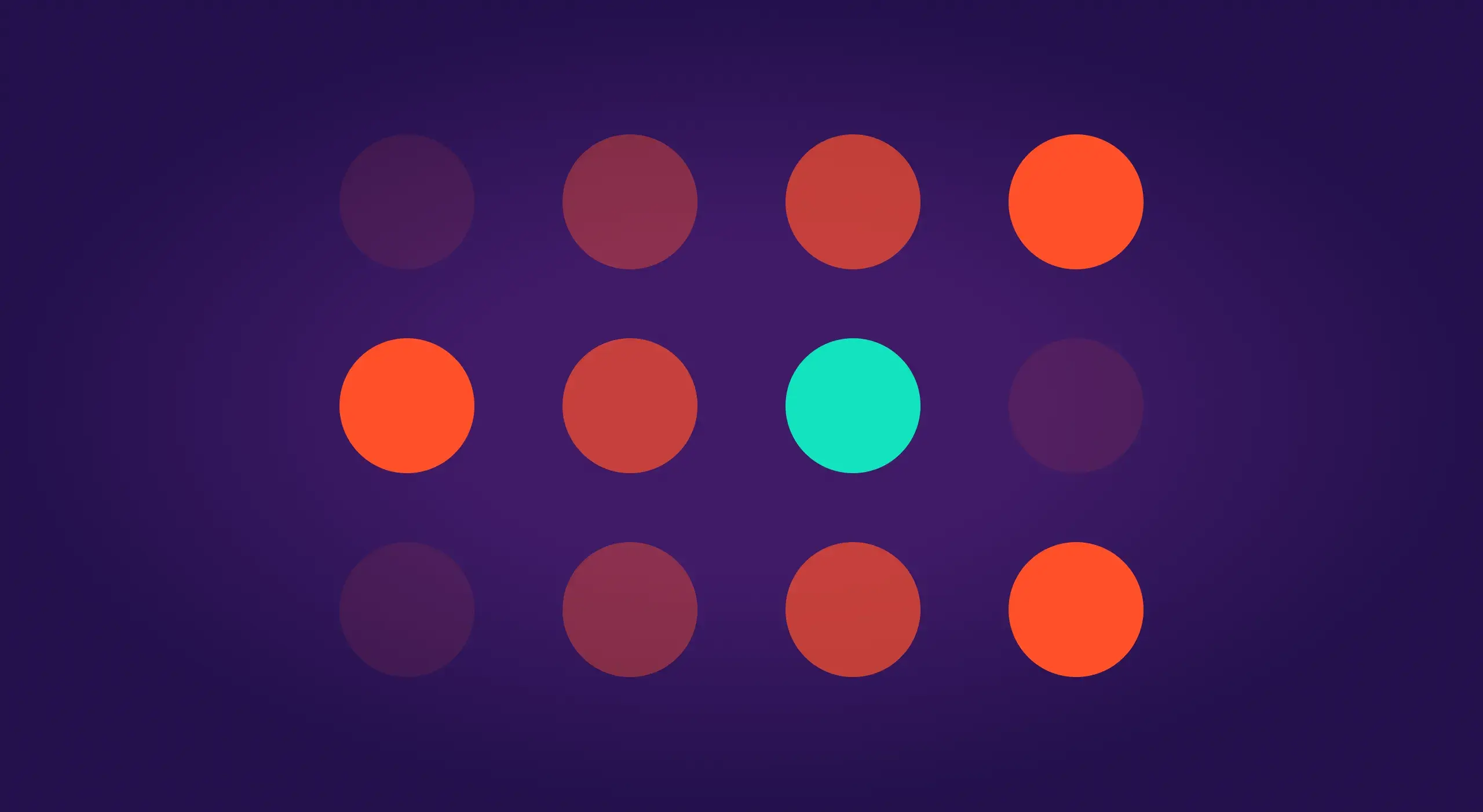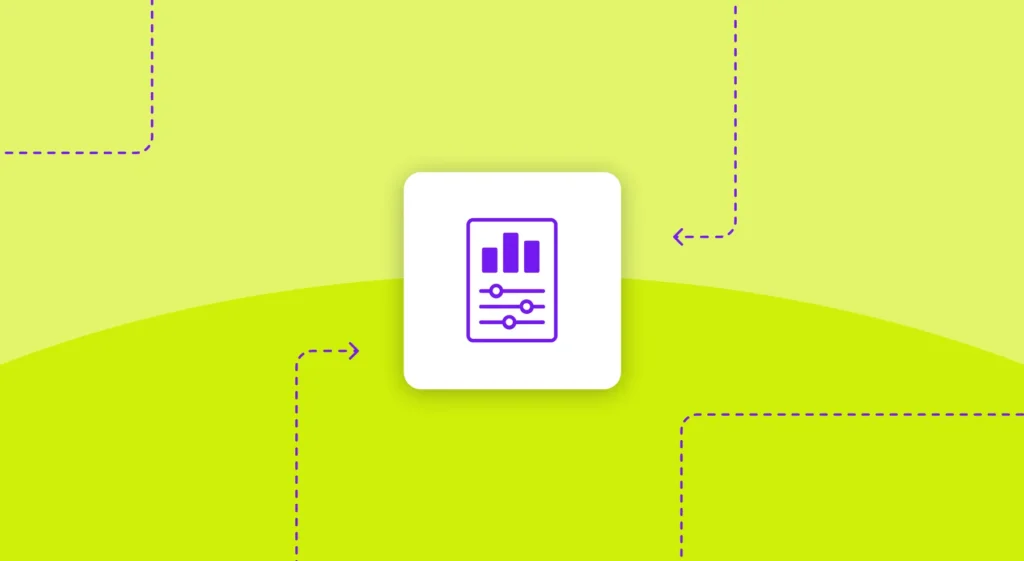In this article
GetDX (getdx.com) is an engineering intelligence platform that seeks to set itself apart through its partnership with known developer productivity researchers, such as Margaret Storey, PhD (co-author of SPACE framework) and Nicole Forsgren, PhD (former founder and CEO of DORA).
However, don’t be blinded by GetDX’s connections to developer productivity celebrities. After all, we all have access to the latest developer experience (DevEx) frameworks and research.
While GetDX may have a strong pedigree, the platform is still relatively new and working out some kinks. For some users, relying on a platform whose key features and user interface are regularly evolving can take a toll – especially when compared to incumbents in the space whose services, features, and user interfaces are well battle-tested.
If you’re looking for an alternative to GetDX, you’re in the right place. Read on for a list of the most popular alternatives to GetDX, along with their top features.
Why Look for an Alternative to GetDX?
Why Look for an Alternative to GetDX?
Here are a few reasons why you might want to switch from GetDX to an alternative:
- Frequently Changing Features: GetDX is adding new features regularly, but some products still lack desired functionality. Users note that frequent updates can sometimes come as a surprise and require their teams to adjust.
- Team Management & Configuration Challenges: Some users struggle to easily configure and manage team data on the platform. For users managing more than one team, or who see frequent team changes, these updates can become tedious.
- Some Learning Curve: Some users report that new managers might struggle at first to figure out how to get the best use out of the platform. Adding more actionable insights, rather than relying on users to interpret findings, could make the platform more intuitive.
Here’s what some users have been saying about GetDX:
DX seems to have a company stance where they don't want to report on individual productivity. Jellyfish is insanely valuable to understand where we're investing.
Key Features to Consider in a GetDX Alternative
Key Features to Consider in a GetDX Alternative
If GetDX isn’t working for your team, there are plenty of alternatives to choose from. Consider these key features when sorting through which option would best fit your needs:
Data Collection and Integration
Ideally, your developer productivity platform should seamlessly integrate and work with data from myriad sources. Consider the following:
- Diverse Data Sources: The platform should integrate with various data sources like Git repositories, project management tools (Jira, Asana), communication platforms (Slack), and CI/CD pipelines. This ensures a holistic view of developer activity.
- Customizable Data Collection: Look for flexibility in choosing which metrics to track, allowing you to align with your specific goals and avoid unnecessary data overload.
- API Access: A robust API allows for deeper integration with your existing tools and data analysis workflows.
- Workflow Integration: The platform should integrate seamlessly with developers’ existing workflows to minimize disruption. Look for automated notifications, integration with common tools, and more.
Visualization and Reporting
As an engineering manager, your time is precious. Look for tools that automate tedious tasks and make it easy to create intuitive, easily scannable visuals and custom dashboards:
- Customizable Dashboards: The ability to create custom dashboards to visualize key metrics and track progress toward goals.
- Automated Reporting: Generate regular reports on developer activity, team performance, and project health.
- Data Export: Easily export data in various formats for further analysis or sharing with stakeholders.
Developer Experience (DevEx) and Productivity
Consider how much context a platform provides around engineering insights. Can you view quantitative and qualitative data? Can you gain visibility into engineering productivity at the individual, team, and departmental levels? How does engineering work stack up to business goals?
- DORA Metrics and Beyond: Track deployment frequency, lead time for changes, mean time to recovery, change failure rate (DORA), and other research-backed metrics. Also look for platforms that measure code churn, code complexity, work distribution, and collaboration patterns.
- Qualitative Data: The ability to capture qualitative data like developer sentiment, feedback, and pain points through surveys or natural language processing of communication channels.
- Business Alignment: Ensure engineering investment aligns with business goals. Measure engineering output to drive better product direction, business strategy, and other organizational decisions.
People-First Features
Make sure the platform you choose makes developer teams feel empowered, rather than surveilled. Consider platforms with the following developer-centric characteristics:
- Improvement-Oriented: The goal should be to empower developers and improve team collaboration and success – not to monitor individual activity.
- Privacy and Ethics: Ensure the platform respects developer privacy and avoids using data for performance reviews or micromanagement.
- Actionable Insights: Translates data into actionable insights for teams to help identify bottlenecks, reduce technical debt, reduce burnout, and more. Look for features like automated reports, personalized recommendations, and predictive analytics.
The 12 Best GetDX Alternatives and Solutions for Engineering Managers
The 12 Best GetDX Alternatives and Solutions for Engineering Managers
- Jellyfish
- Waydev
- Jira
- Swarmia
- LinearB
- Port
- Code Climate Velocity
- Athenian
- AllStacks
- GitLab
- Faros AI
- Hivel
1. Jellyfish
Jellyfish, the leading engineering management platform, enables engineering, finance, and business leaders to align engineering output with business impact.
With Jellyfish, businesses can measure, improve, and communicate the investment in and effectiveness of their engineering organizations’ efforts with solutions aimed at improving developer experience, simplifying software capitalization, and understanding the impact of GenAI coding tools.
Clari, Hootsuite, Priceline, ZoomInfo, and PagerDuty use Jellyfish to optimize engineering resource allocation so their teams can focus on what matters most to the business.
Key Features of Jellyfish
- Automated Data Aggregation: Jellyfish automatically gathers data from your development tools (Jira, GitHub, GitLab, etc.) and consolidates it into a single platform. No more manual data collection!
- Customizable Dashboards: Create tailored dashboards to visualize key metrics like cycle time, deployment frequency, and work distribution.
- Engineering Metrics: Track DORA metrics, code churn, code complexity, and other relevant engineering performance indicators.
- Allocation Tracking: See how engineering time is spent across different projects, tasks, and activities (e.g., new features vs. bug fixes) for better decision-making.
- Progress Tracking: Monitor progress on initiatives and identify potential roadblocks or bottlenecks hindering development.
- Reporting and Analytics: Generate detailed reports on team performance, project health, and engineering efficiency.
- Robust Integrations: Seamlessly integrates with popular project management, code repository, and communication tools.
Why Do Companies Choose Jellyfish Over GetDX?
Compared to GetDX – Jellyfish stands out as a better option due to the following:
- Focus on Business Impact: Jellyfish strongly emphasizes connecting engineering work to business outcomes. This is ideal for companies that want to demonstrate the value of their engineering investments and ensure alignment with strategic goals.
- Effort Allocation and Investment Analysis: Jellyfish provides detailed insights into how engineering effort is allocated across different projects and initiatives. It also offers tools for analyzing the return on investment (ROI) of engineering work. These features are valuable for companies looking to optimize resource allocation and make data-driven decisions about their engineering investments.
- DevEx Features: With Jellyfish’s DevEx tools, users can effortlessly diagnose engineering needs using research-backed survey templates, select data signals, and actionable suggestions.
- DevFinOps Capabilities: Jellyfish offers robust DevFinOps features, including cost visibility, software capitalization, and cloud cost optimization. These capabilities are attractive to companies looking to gain a better understanding of their engineering costs and improve financial planning.
- Ease of Use and Customization: Some users find Jellyfish’s interface and reporting tools more intuitive and customizable than GetDx. This can be a deciding factor for companies that want a platform that is easy to use and adapt to their specific needs.
- Pricing: While pricing for both platforms can vary depending on the needs of the organization, some companies may find Jellyfish’s pricing model more attractive.
Here’s what some users have been saying about Jellyfish:
- Provides great, in-depth metrics and visibility.
- Aligns engineering efforts with company goals, making developer work feel more meaningful.
- Provides valuable insights on individual, team, and organizational levels.
2. Waydev
Waydev is an engineering intelligence platform that uses DORA metrics, the SPACE framework, developer experience insights, and AI capabilities to help engineering leaders make more strategic decisions and accelerate development cycles.
By automatically tracking work, visualizing project timelines, and streamlining code reviews, Waydev provides insights to improve efficiency and collaboration.
Key Features
- Automated Work Logs: Automatically generates work logs from Git activity, eliminating manual entry and improving accuracy.
- Project Timeline Visualization: Clearly see project progress, identify potential delays, and allocate resources effectively.
- Code Review Workflow: Streamlines code reviews with metrics and automation to identify bottlenecks and improve code quality.
- Sprint Planning and Tracking: Supports agile development with tools for sprint planning, task management, and progress tracking.
What Are Some Limitations of Waydev?
- The platform can be pricey for midsize companies.
- Some users would like the ability to further customize dashboards.
- The initial learning curve can be steep.
3. Jira
Jira is a versatile project management tool widely used in software development. It helps teams plan, track, and release software by providing a centralized platform for managing issues, tasks, and workflows. Many teams use Jira to manage both short and complex projects by helping teams organize work, create milestones, map dependencies, and more.
Key Features
- Issue Tracking and Management: Create, assign, and track issues (bugs, tasks, stories) throughout the development lifecycle.
- Agile Development: Supports agile methodologies with Scrum and Kanban boards for visualizing and managing work.
- Workflow Customization: Define and customize workflows to match your team’s specific processes.
- Extensive Integrations: Connects with a wide range of developer tools, extending its functionality.
What Are Some Limitations of Jira?
- High levels of customization and a complex UI can feel daunting or overwhelming.
- It can be expensive, especially for startups and midsize companies.
- The platform can be slow when dealing with large datasets.
4. Swarmia
Swarmia is an engineering intelligence platform that focuses on business outcomes, developer productivity, and developer experience. Swarmia helps business leaders better understand where engineering is spending its time. It tracks engineering metrics to help teams boost productivity and identify areas of improvement for a better DevEx.
Key Features
- Real-time Collaboration: Facilitates communication and collaboration through in-context discussions and shared understanding of code changes.
- Workflow Automation: Automates repetitive tasks like creating pull requests or sending reminders, freeing up developers to focus on coding.
- Code Review Improvements: Enhances code reviews with features like asynchronous feedback, automated reminders, and improved organization.
- Metrics and Insights: Provides data on team performance, code review efficiency, and other metrics to identify areas for improvement.
What Are Some Limitations of Swarmia?
- Some users would like more control over how they filter or view different metrics.
- There aren’t enough integration options for some users.
- It’s unclear how Swarmia determines some metrics.
5. LinearB
LinearB is an engineering intelligence platform that helps teams deliver software faster and more predictably. It provides data-driven insights into development processes, identifies bottlenecks, and helps optimize workflows. LinearB promises to reduce developer frustration and improve productivity with DevEx features such as project forecasting, programmable workflows, and more.
Key Features
- Delivery Metrics: Tracks DORA metrics and other key performance indicators to measure engineering efficiency and identify areas for improvement.
- Project Planning: Helps plan and track projects with a focus on predictability and on-time delivery.
- Workflow Automation: Automates tasks and streamlines workflows to reduce manual effort and improve efficiency.
- Root Cause Analysis: Provides insights into the root causes of delays and bottlenecks, enabling data-driven improvements.
What Are Some Limitations of LinearB?
- Some users would like additional integrations.
- Reporting for C-level executives could be better.
- Additional actionable insights could be helpful.
6. Port
Port is an internal developer portal that streamlines workflows and promotes self-service for developers and DevOps. It provides a centralized hub for accessing information, tools, and resources, enabling developers to be more productive and autonomous. Port claims to help teams deliver compelling developer experiences customized to your tech stack, developer personas, and culture.
Key Features
- Developer Portal: Creates a central location for documentation, tools, and resources, improving developer experience and knowledge sharing.
- Workflow Automation: Allows developers to automate tasks and build custom workflows, reducing manual effort and increasing efficiency.
- Self-Service: Empowers developers to manage their own environments and resources, promoting autonomy and reducing reliance on operations teams.
- Integrations: Connects with various developer tools and cloud platforms, extending its functionality and enabling seamless workflows.
What Are Some Limitations of Port?
- Initial setup and scoping can be time-consuming.
- Some users would like more customization capabilities.
- A better search would be useful.
7. Code Climate Velocity
Code Climate Velocity is an enterprise-level engineering intelligence platform. It partners closely with engineering leadership in a three-step process that includes holding a diagnostic workshop, creating customized dashboards and reports, and sharing a tailored action plan.
Like other engineering intelligence platforms, Code Climate Velocity says it helps engineering teams gain insights into code complexity, risk, and other factors that impact development velocity.
Key Features
- Diagnostic: Code Climate experts hold a series of workshops with the leadership team to identify the engineering team’s health and key challenges.
- Custom Dashboard & Reports: The Code Climate team provides a custom dashboard and report based on priorities identified in the diagnostic workshops.
- Action Plan: Tailored plans recommend actionable measures, experiments, and process adjustments.
What Are Some Limitations of Code Climate Velocity?
- Users wish there was a better way for metrics to account for PTO, training, holidays, etc.
- Some users would like a more robust breakdown of metrics.
- Not as accessible for individual contributors as other tools.
8. Athenian
Athenian is an engineering insights platform that helps software engineering teams autonomously improve their processes and performance. It provides a comprehensive view of engineering-team work (rather than the work of individuals), from code commits to releases, and offers tools for tracking progress, identifying bottlenecks, and optimizing workflows.
Key Features
- Deep Data Integration: Connects to various data sources (GitHub, Jira, etc.) to provide a holistic view of engineering activity.
- Customizable Metrics: Track a wide range of metrics, including DORA metrics, cycle times, and code churn, tailored to your specific needs.
- Workflow Visualization: Visualize workflows to identify bottlenecks and optimize processes.
- Predictive Analytics: Uses AI to predict future performance and identify potential risks.
- Collaboration Tools: Facilitates collaboration with shared dashboards and reporting features.
What Are Some Limitations of Athenian?
- Lacks qualitative insights to balance out quantitative metrics.
- The user interface can be slow to load.
- Some users report slow customer support.
9. AllStacks
AllStacks calls itself a value stream intelligence platform. Its goal is to empower engineering teams to view project health, align with business objectives, commit to goals, and more. AllStacks analyzes data across the software development lifecycle using AI and machine learning to identify project risks, predict potential delays, and improve delivery predictability.
Key Features
- AI-Powered Risk Prediction: Identifies potential risks and delays based on historical data and project patterns.
- Predictive Forecasting: Forecasts project completion dates and provides insights into potential roadblocks.
- Data-Driven Insights: Offers data-driven insights into team performance, project health, and engineering efficiency.
- Integrations: Integrates with popular project management and code repository tools.
- Reporting and Visualization: Provides customizable dashboards and reports to communicate project status and insights.
What Are Some Limitations of AllStacks?
- Some users find that tools and features are not as advanced as other platforms.
- Data could be synchronized more frequently.
- Setting up new users can be clunky.
10. GitLab
GitLab is an AI-powered software delivery platform. This DevSecOps platform helps teams deliver secure software faster through a wide range of tools that work throughout the entire software development lifecycle. With GitLab, teams can automate and accelerate software delivery, boost productivity, and integrate security.
Key Features
- Code Repository: Provides Git-based version control for managing code.
- CI/CD Pipelines: Enables continuous integration and continuous software delivery for automating build, test, and deployment processes.
- Issue Tracking: Offers built-in issue tracking and management.
- Collaboration Tools: Facilitates collaboration with features like code reviews, merge requests, and wikis.
- Security and Compliance: Includes security features like vulnerability scanning and compliance tools.
What Are Some Limitations of GitLab?
- The platform is complex and comes with a steep learning curve for new users.
- Occasional performance issues with large projects or during peak hours.
- Some users would like more features at the CI/CD level.
11. Faros AI
Faros AI is a copilot for enterprise technology organizations. Faros AI provides engineering leaders with visibility into engineering productivity so they can make data-driven decisions about their processes and investments. Faros AI ingests data from standard and custom data sources and analyzes it with AI to provide real-time intelligence and guidance.
Key Features
- Data Centralization: Aggregates data from various engineering tools and sources into a single platform. Teams do not need to refactor or standardize data.
- Metrics and Analytics: Tracks key engineering metrics, including DORA metrics, cycle times, and deployment frequency.
- Workflow Optimization: Identifies bottlenecks and inefficiencies in engineering workflows.
- AI-Powered Insights: Uses AI to provide insights and recommendations for improving engineering performance.
- Integration Options: Integrates with a wide range of engineering tools and platforms.
What Are Some Limitations of Faros AI?
- It can be time-consuming to keep data from non-standard sources synced correctly.
- There’s an initial learning curve.
- Some users report minor configuration challenges.
12. Hivel
Hivel is an engineering analytics and intelligence platform that provides teams with data-driven insights, helps optimize processes, and keeps projects on track. Hivel correlates data from common engineering tools, such as Jira and Git, to create team-based metrics.
Key Features
- Time Tracking: Tracks time spent on tasks and projects.
- Productivity Analysis: Analyzes productivity data to identify trends and areas for improvement.
- Goal Setting and Tracking: Helps set and track goals for individuals and teams.
- Reporting and Visualization: Provides reports and dashboards to visualize productivity data.
- Integrations: Integrates with project management tools like Jira and Asana.
What Are Some Limitations of Hivel?
DX and LinearB don’t treat team-based metrics or person-based metrics as first-class citizens like Jellyfish does.
Jellyfish – The #1 GetDX Alternative
Jellyfish – The #1 GetDX Alternative
Jellyfish is the engineering management platform you can trust to ensure alignment through the entire engineering organization to anticipate the future, build with efficiency, and deliver business impact. Teams can use Jellyfish to improve engineering team performance, optimize DevEx, support DevFinOps, and more.
Ready to give Jellyfish a spin? Schedule a demo.
About the author

Lauren is Senior Product Marketing Director at Jellyfish where she works closely with the product team to bring software engineering intelligence solutions to market. Prior to Jellyfish, Lauren served as Director of Product Marketing at Pluralsight.





